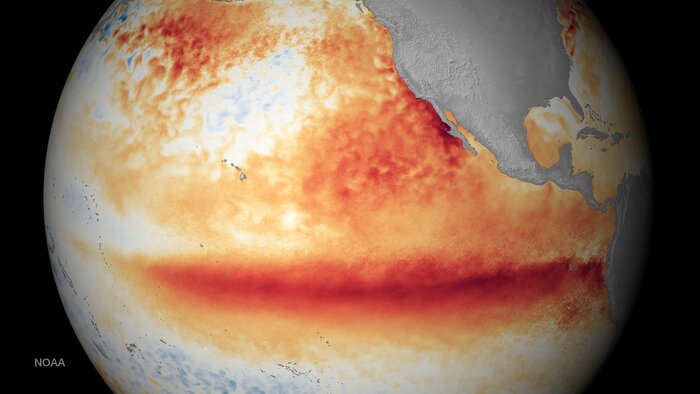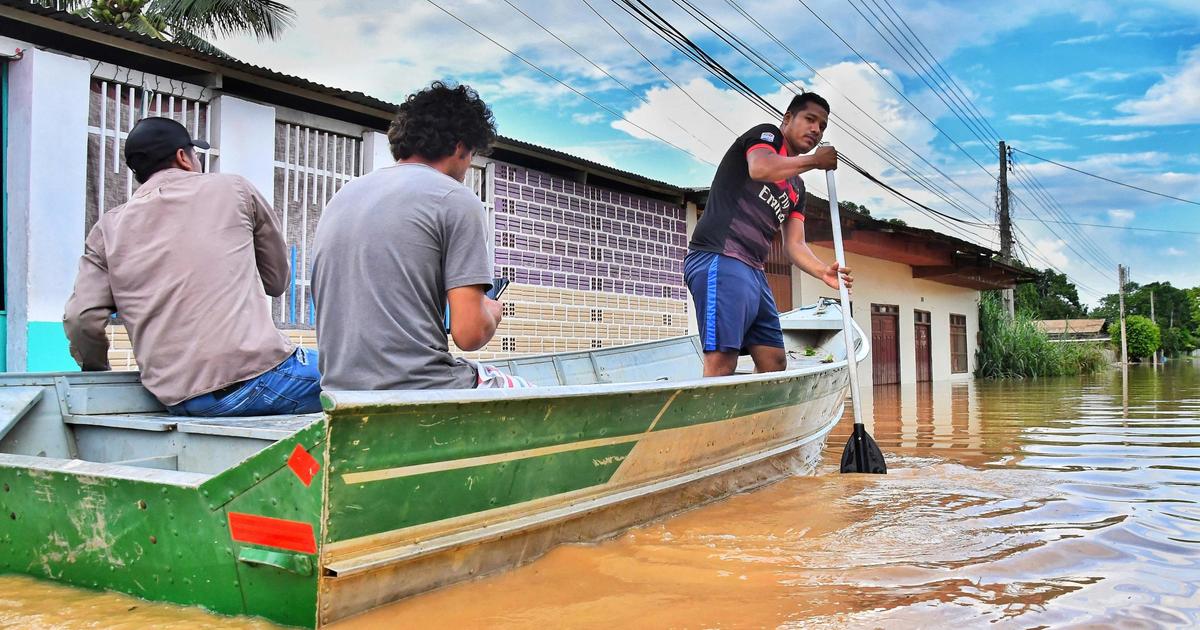See the fury inside Hurricane Sam 2:13
(CNN) -
Winter weather, current drought conditions and even the rest of the hurricane season will be affected by the recent cooling of sea surface temperatures in the Pacific.
La Niña conditions - the opposite phase of El Niño - emerged in the tropical Pacific Ocean over the past month, the National Oceanic and Atmospheric Administration's (NOAA) Climate Prediction Center reported Thursday.
La Niña usually brings wetter and cooler than average conditions to the Pacific Northwest and the northern plains, especially during winter.
On the contrary, the arrival of La Niña means drier and warmer conditions than usual in the south.
This could mean that the drought-stricken southwest remains dry.
(This phenomenon was also present last winter and worsened the drought situation throughout the West and Southwest.)
advertising
The southeast is also typically drier during a La Niña winter, although the possibility of a tropical climate including hurricanes increases before the season begins.
La Niña will persist through winter
La Niña is a natural oceanic-atmospheric phenomenon that is characterized by cooler-than-average sea surface temperatures in the central and eastern Pacific Ocean near the equator and consequently affects the weather worldwide.
"La Niña is projected to affect temperature and rainfall across the United States in the coming months," the center said in issuing a La Niña advisory on Thursday, saying conditions are present and predicting they will continue.
The notice replaces an alert that indicated the favorable conditions for its development that had been in force since July.
NOAA will release its outlook for winter on October 21, and the presence of La Niña is expected to weigh heavily on the forecast.
The forecasting center considers that there is a near 90% chance that La Niña will continue through the winter of 2021-2022.
Both La Niña and El Niño occur every three to five years on average, according to NOAA.
The impact of La Niña on the hurricane season
During this phenomenon, weaker winds between the ocean surface and the upper levels of the atmosphere affect global jet currents and can influence the trajectory and severity of winter storms and hurricanes during warmer months.
What does auto insurance cover in the event of a flood?
5:24
"La Niña is associated with reduced vertical wind shear in the Caribbean and tropical Atlantic," said Phil Klotzbach, a research scientist at Colorado State University.
"Excess shear is what usually ends the hurricane season in the Atlantic, so La Niña can prolong the active part of the season," he explained.
"Last year is a great example of this, as we had six hurricanes and five major hurricanes in October-November," he said.
"While we certainly don't expect to see all that activity in the remainder of the season, the development of La Niña leaves the window open for more late-season storms this year," he added.
At the beginning of the hurricane season, forecasters said to watch out for La Niña in October because it could make the last stretch of the season active.
Currently, conditions in most of the Atlantic are not conducive to hurricane formation.
But this could change in the coming weeks.
How could climate change impact?
While El Niño and La Niña events are regular aspects of weather patterns, rising global temperatures can soften or change their effects.
2500, the apocalyptic year caused by climate change 0:45
La Niña tends to lower global temperatures, but in recent years the planet has warmed so fast that it is as if a small speed bump were hit at 130 km / h: it is hardly noticeable.
It is too early to know how climate change will affect these patterns.
For now, research is beginning to show how warmer weather can amplify the effects of El Niño and La Niña.
Climate change could increase the severity of weather events derived from El Niño and La Niña patterns, according to a 2018 study of atmospheric conditions that performed simulations of weather conditions.
High on the list of warmer years used to be reserved for strong El Niño years, but human influence has long outpaced the planet's natural temperature regulators.
For example, La Niña was present for parts of 2020, but the year remained tied with 2016 (an El Niño year) as the warmest on record on the planet.
La Niña phenomenon









